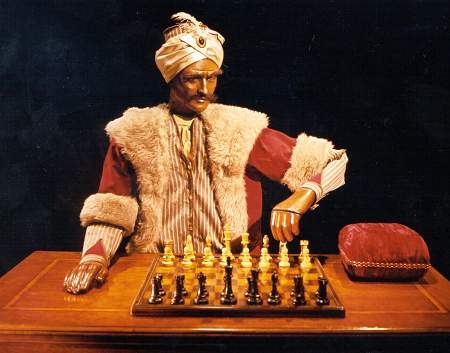
John Gaughan's version of "The Turk"
Like my post on Maskelyne's "Psycho" and "Zoe" automatons, the interest here is its place in history in terms of remote master-slave manipulators, and I shall confine myself to just that. There is significant other matter on "The Turk" published elsewhere already.
Well established as a fake contrivance [pseudo automaton, faux (false) automaton], The Turk was presented as a clockwork machine that played chess. Although believed to be a trick very early on, there has and still is much conjecture around how it actually worked. From our interest here, it is certainly true that the Turk's arm was mechanically operated. The question is how? There have been various attempts to guess at, described based on personal observation, or the re-invention of the machine. With all the Turk's operators having kept quite on the detail, and the Turk being destroyed in a fire, all we can do is base our finding on our interpretations of those earlier attempts, and also in re-construction attempts (by John Gaughan in America and the Heinz Nixdorf Computer Museum in Germany).
Never-the-less, after considering all of that, I still consider the Turk as the first master-slave manipulator based on anthropomorphic terms.
The manipulator needed at least 4 degrees-of-freedom – arm left and right, arm forward and back, arm raised and lowered, and the hand with an opening/closing grip.
Racknitz had seen the Turk's performance in Dresden of 1784. Over the next 5 years he built a series of models and eventually wrote a book, its title translated as "The chess-player of Mr. Von Kempelen and an imitation of it". It has some wonderful engravings showing his interpretation of how the manipulator worked.
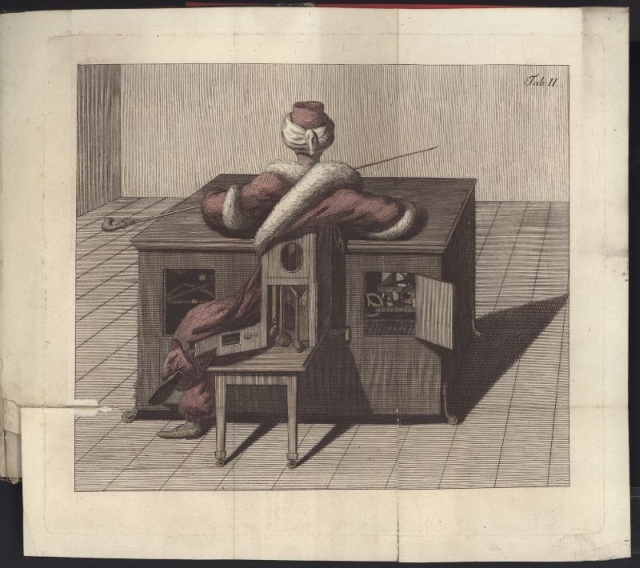


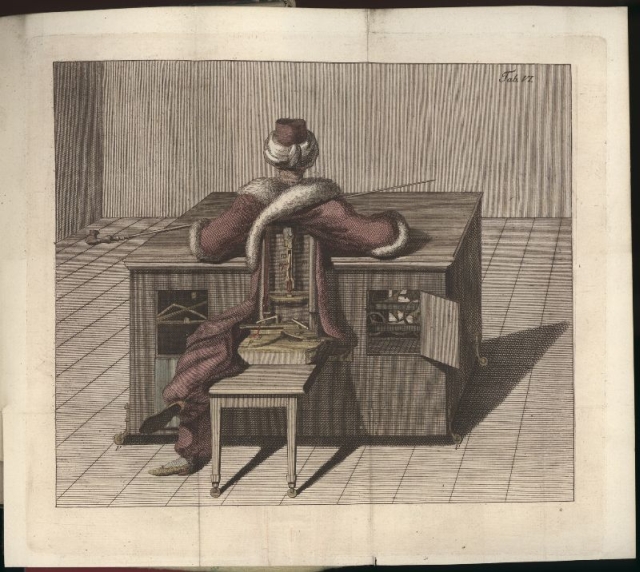
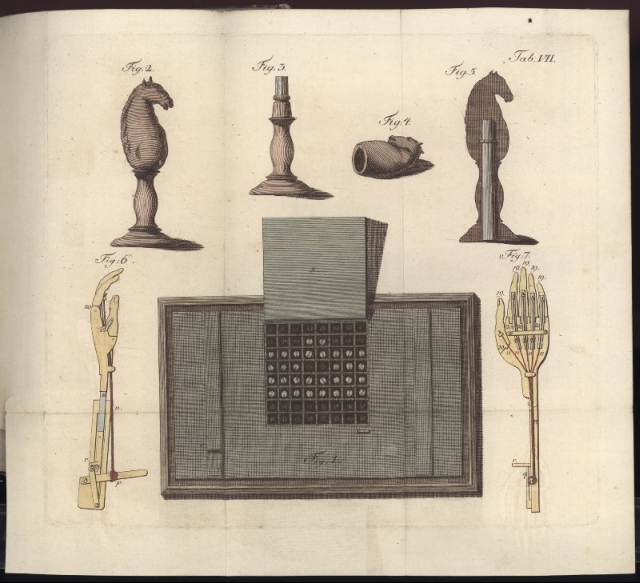
Heinz Nixdorf Museum recently built a replica. Here are its modern day interpretation and realization.
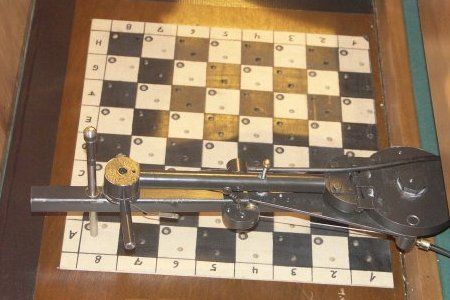
The master-unit inside the cabinet.
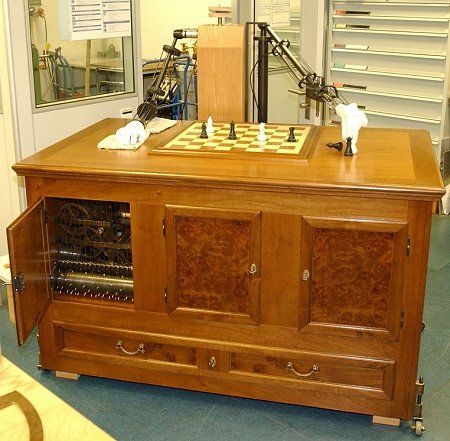
The slave-component of the manipulator, being the Turk's left arm.